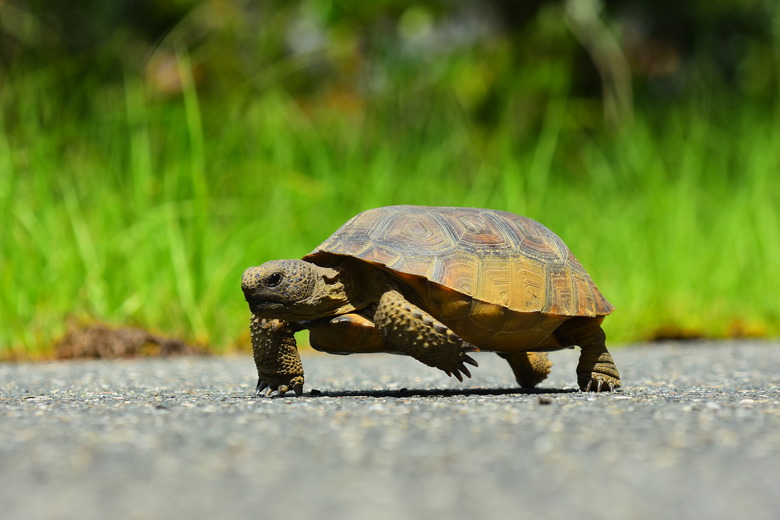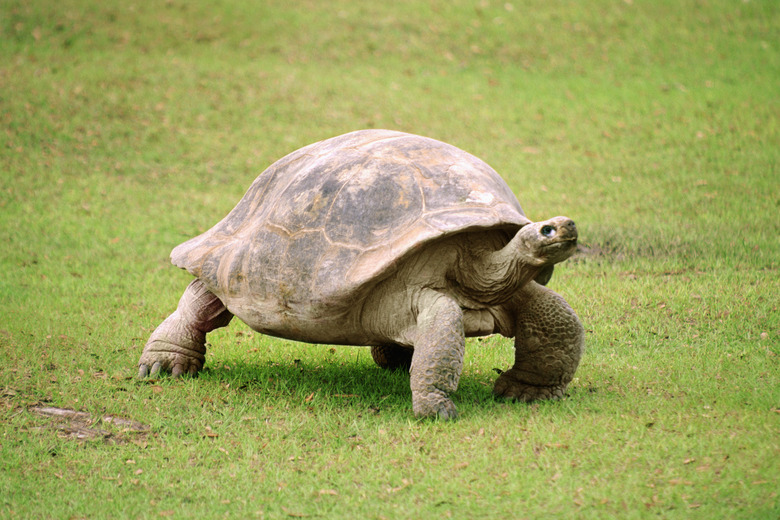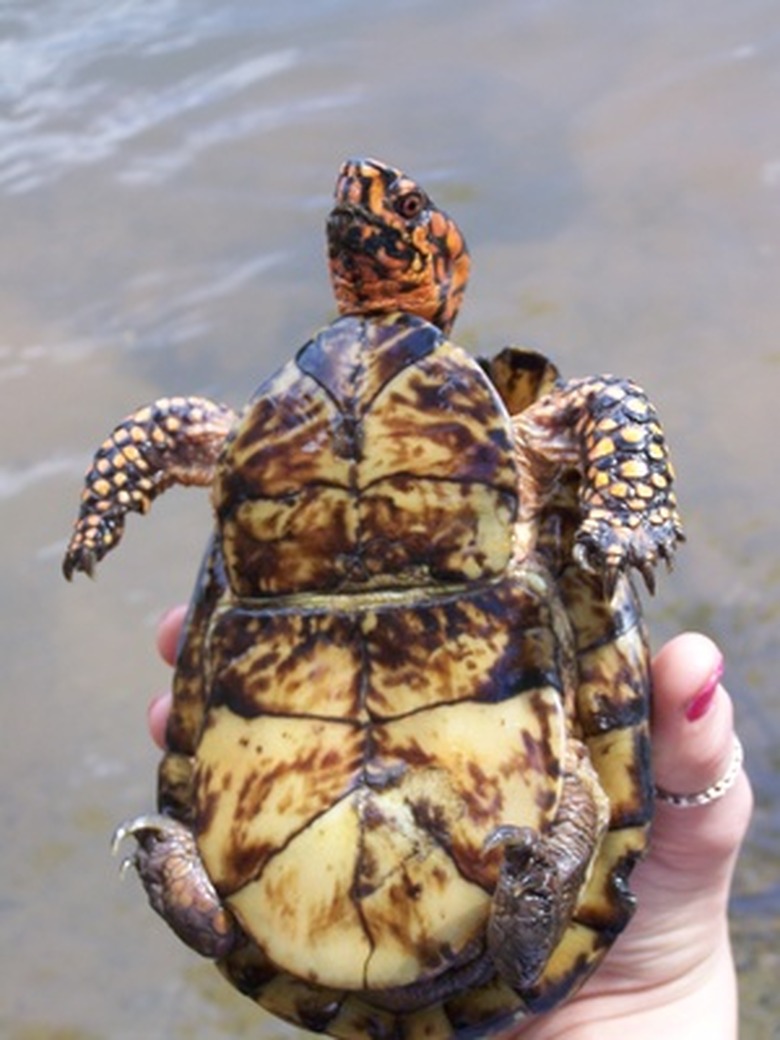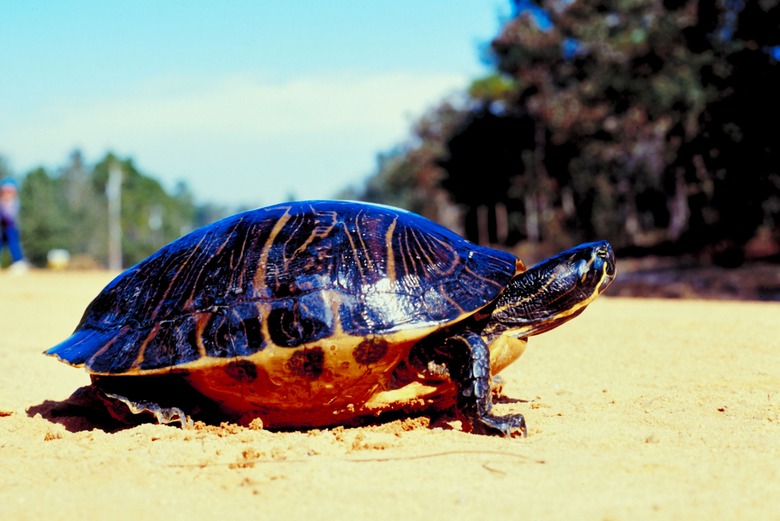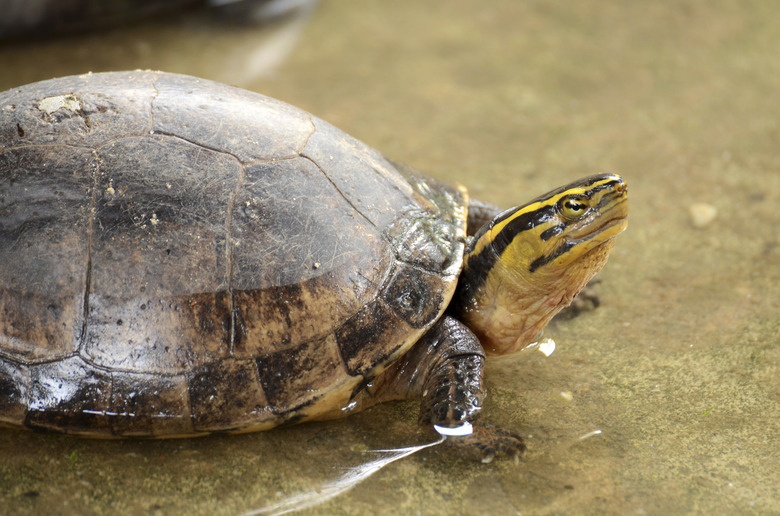How To Identify Florida Land Turtles
More than 30 species of turtle call Florida home, and while the majority are primarily aquatic a handful go about their business mostly on land: several varieties of box turtle as well as the gopher tortoise. These slow-moving, long-lived reptiles face major challenges in the Sunshine State from collection for the pet trade, road mortality and habitat loss, and one of the native land turtles – the gopher tortoise – is designated as a Threatened species.
Warning
Do not handle or disturb gopher tortoises as they are a Threatened species and are protected by state law.
Identifying the Gopher Tortoise
Identifying the Gopher Tortoise
The gopher tortoise boasts thickset hind legs often compared to an elephant's and heavily scaled forelegs equipped with robust claws for burrowing. A uniform gray, gopher tortoises lack the intricate patterning of box turtles and grow substantially larger: The biggest may have shells a foot or more in length. They tend to be found in sandy habitats such as pinewoods and scrub prairie, and rarely venture very far from their burrows.
Florida Distribution of the Box Turtles
Florida Distribution of the Box Turtles
If the land turtle you're trying to identify isn't a gopher tortoise but instead one of the several subspecies of box turtle, consider the location in which you've stumbled across it. Only the Florida box turtle ranges nearly statewide except for the Panhandle. The eastern, Gulf Coast and three-toed box turtles are restricted to the Panhandle and extreme northern Florida.
Comparing Florida & Three-Toed Box Turtles
Comparing Florida & Three-Toed Box Turtles
The Florida box turtle typically boasts yellow radiating bands on a very domed shell (carapace) as well as yellow stripes on each side of its head. The males of this subspecies show a very noticeable concavity on the bottom of their shells (or plastron), whereas the plastron of male three-toed box turtles tends to be nearly flat. Three-toed box turtle often have plain olive-brown shells but may show yellow spots on the carapace and head. This subspecies gets its name from the number of toes on its hind feet, but be aware that Florida box turtles sometimes have three hind toes as well: It's not a foolproof identification feature, in other words.
The Gulf Coast Box Turtle
The Gulf Coast Box Turtle
The Gulf Coast box turtle ranks as the largest of Florida's box turtles, sometimes achieving a length of 8.5 inches. The back of its shell distinctively flares upward in gutter-like fashion, in contrast to the downward-angling shell of the eastern box turtle. Gulf Coast box turtles tend to be darker and less boldly marked than the Florida or eastern subspecies; some individuals have white blotches on their heads.
Field Notebook: A Handy Tool for Identifying Florida Land Turtles
Field Notebook: A Handy Tool for Identifying Florida Land Turtles
You can carry around a small notebook and pencil – which is sometimes more convenient and trustworthy than a camera – especially on long hikes or camping trips. This way you can quickly sketch any turtles you find and jot down any noticeable markings, colors and other characteristics, which will make identification easier for you later on.
References
Cite This Article
MLA
Writer, Contributing. "How To Identify Florida Land Turtles" sciencing.com, https://www.sciencing.com/identify-florida-land-turtles-6578641/. 19 April 2018.
APA
Writer, Contributing. (2018, April 19). How To Identify Florida Land Turtles. sciencing.com. Retrieved from https://www.sciencing.com/identify-florida-land-turtles-6578641/
Chicago
Writer, Contributing. How To Identify Florida Land Turtles last modified March 24, 2022. https://www.sciencing.com/identify-florida-land-turtles-6578641/
